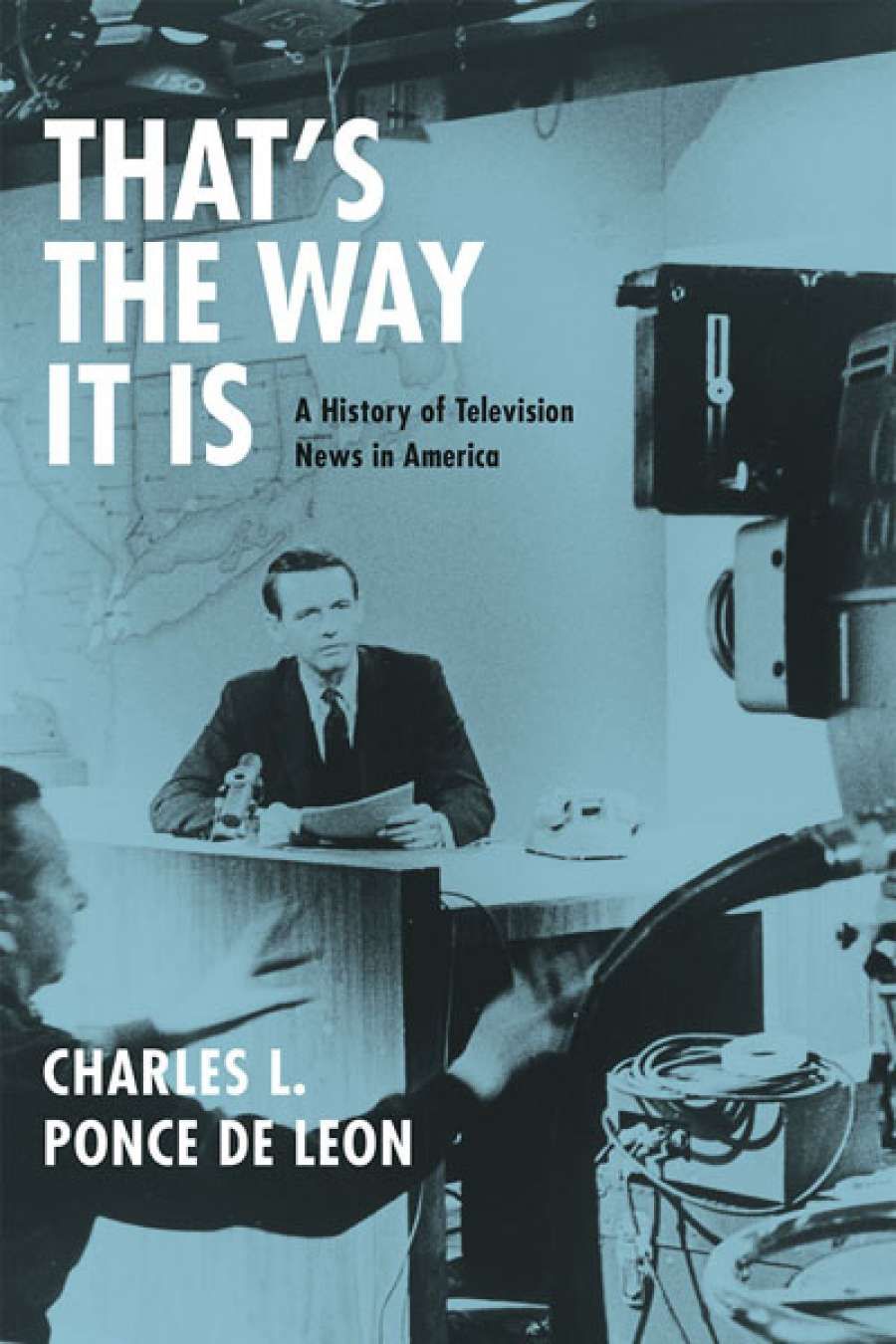
- Free Article: No
- Contents Category: Media
- Custom Article Title: John Henningham reviews 'That's The Way It Is' by Charles L. Ponce de Leon
- Book 1 Title: That's The Way It Is
- Book 1 Subtitle: A History of Television News in America
- Book 1 Biblio: University of Chicago Press (Footprint), $66 hb, 352 pp, 9780226472454
Ted Turner is revealed as the least likely television owner to embrace twenty-four-hour news. His obscure southern station thumbed its nose at FCC news broadcast requirements by running a half-hour bulletin at 3:30 am anchored by a comedian and his dog. Yet Turner was persuaded to fund and control the cable news service that became CNN. It its heyday it was the foremost provider of breaking news.
Pay television via cable and satellite marked the first major challenge to the big three broadcast networks (CBS, NBC, ABC), with the splintering of audiences and opportunities for niche content. But network news faced a new challenge with the launch by Rupert Murdoch of the Fox network. Few thought Fox could seriously challenge the big three, but Murdoch's bottomless pockets ensured a high profile for Fox, and its news programming took on the liberal-oriented media establishment. Although pitched by head Roger Ailes as a balanced corrective to the prevailing orthodoxy, Fox through its robust editorialising became a cheerleader for the Bush administration in its pursuit of the Iraq war. For a time, ratings wins flowing from Fox's stance led other networks from their more sceptical war coverage towards what was described as a more 'patriotic' approach. (One wonders how US involvement in Vietnam would have ended if there had been a Fox in the early 1970s.) Comedy Central's The Daily Show at one stage provided the most sustained critique of the Bush government.
'Often with little means of actually visualising, they would resort to such devices as models or using toy soldiers to describe the Korean War'
Nevertheless it is apparent that from fairly early on commercial television news had a more high-minded and public-service orientation in the United States than in most countries. Richard Salant developed a CBS conduct code far more stringent than anything devised by regulators. News chiefs espoused values that would have done Lord Reith proud. The networks competed on quality – for example CBS's Cronkite versus NBC's Huntley-Brinkley. An aggressive, investigative 60 Minutes – with celebrity journalists like Mike Wallace, Harry Reasoner, and Dan Rather – at one stage outrated all other programming on television.
 Walter Cronkite on television, 1976 (photograph by Thomas J. O'Halloran via Wikimedia Commons)
Walter Cronkite on television, 1976 (photograph by Thomas J. O'Halloran via Wikimedia Commons)
Journalists' belief in the quality of their product was intense. Fred Friendly angrily quit CBS when the network refused his demands to replace all daytime programming with coverage of the Senate Foreign Relations Committee's Vietnam War hearings. But management often agreed with the news imperative. The assassination of President Kennedy resulted in a news takeover of all television programming for four days, cancelling $30 million in advertising. The three-day coverage of the aftermath of the 9/11 terrorist attacks cost $300 million. The widely held view in countries with hybrid broadcast systems like Britain and Australia that a strong public broadcaster is needed to maintain quality journalism could be turned on its head in the light of the American experience. Indeed, does the existence of an ABC or BBC act to drive commercial opponents further towards the popular end of the spectrum?
'For a time, ratings wins flowing from Fox's stance led other networks from their more sceptical war coverage towards what was described as a more ''patriotic'' approach'
But news did find a role within US public broadcasting, which had been a loosely connected bunch of university broadcasters and independent stations similar to Australia's Channel 31. With Ford and Carnegie money plus public subscriptions, Fred Friendly and colleagues built PBS into an alternative news service, producing critical documentaries on social issues. Friendly himself was opposed to seeking government funding for public broadcasting; he predicted that it would lead to attempts at control, which it did. Federal budgetary cuts resulted in an emphasis on 'safe' programming such as The MacNeil/Lehrer Report, with a consciously even-handed approach, in contrast with commercial news programs, which 'were widely accused of being disrespectful of authority and tainted by liberal bias'.
Ponce de Leon provides a straightforward, mainly chronological narrative, and his writing is clear and uncluttered. The sources are mostly secondary. He has not delved into company archives or conducted original interviews; he calls the book a 'synthetic' history. But he has woven the diverse materials at hand effectively. I would have liked more on non-network news – and, indeed, more on news itself as opposed to what we in Australia call current affairs journalism, including a discussion of the content mix of news and how this has been affected by changes in society and technology. Coverage of non-American influences would have enhanced the story.


Comments powered by CComment